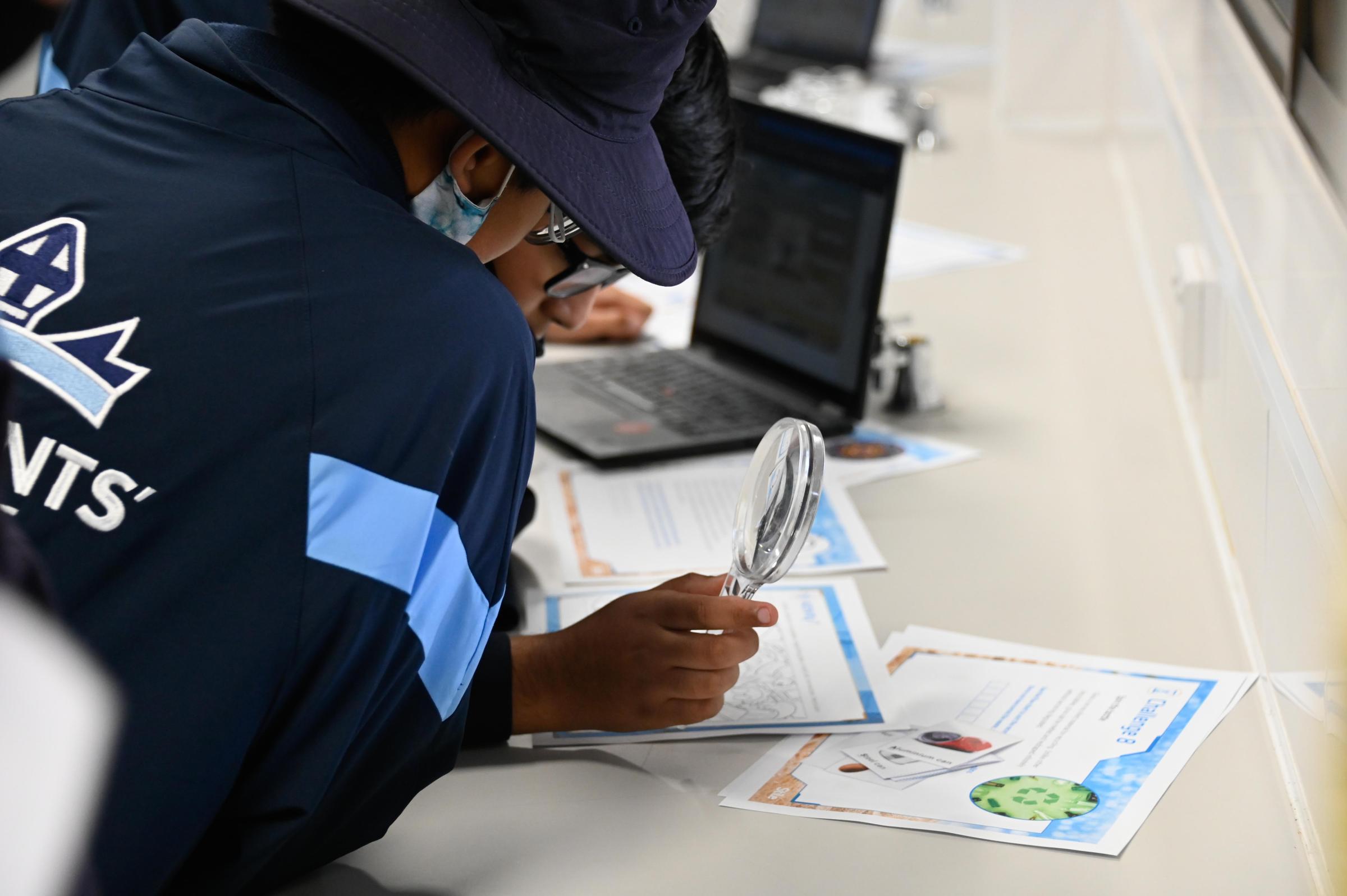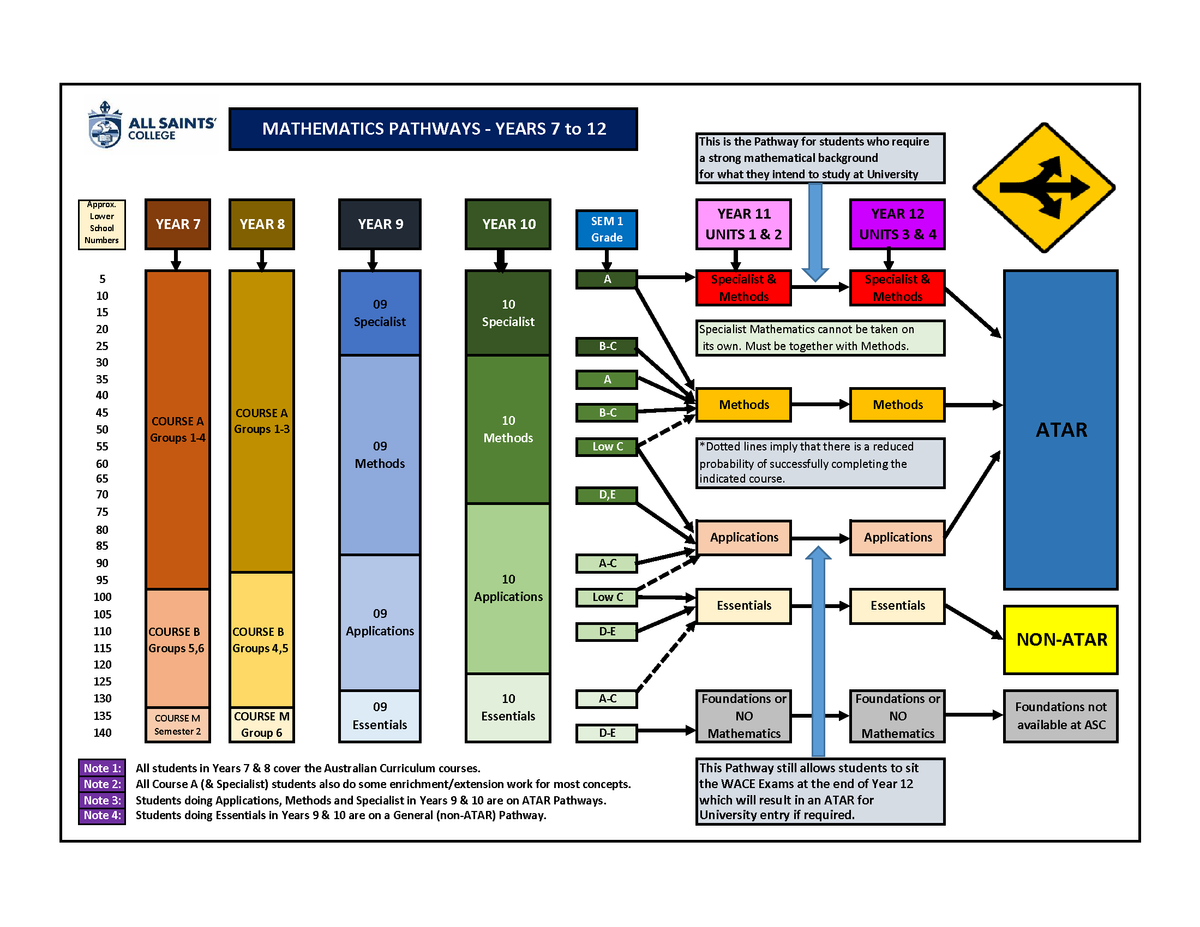YEAR 10 COMPULSORY MESH OPTIONS

MATHEMATICS LEARNING AREA
Learning mathematics is fundamental to both personal development and future success. It equips students with essential skills that are not only useful in everyday life—such as budgeting, measuring, and interpreting data—but also vital across a wide range of careers, from engineering and finance to health sciences and technology.
Mathematics fosters logical reasoning and structured thinking, helping students approach problems methodically and make sound, evidence-based decisions. These problem-solving abilities extend beyond the classroom, enabling students to tackle real-world challenges with confidence and clarity.
Moreover, mathematics underpins many other areas of learning. Subjects such as science, economics, and geography rely heavily on mathematical concepts, making it a key component of interdisciplinary understanding. By developing critical thinking, analytical skills, and perseverance, mathematics empowers students to become thoughtful, informed, and capable individuals prepared to navigate an increasingly complex world.
By the end of the year, students are expected to show strong understanding in four key areas of mathematics: Understanding, Fluency, Problem-Solving, and Reasoning. They apply these skills when working with the topics they've learned throughout the year, especially in everyday situations.
We aim for them to be able to do the following:
- Use maths to solve real-world problems by choosing the right tools, working through solutions step-by-step, and clearly explaining their thinking.
- Understand when it’s better to use exact or approximate values in calculations.
- Use formulas from real-life situations (like calculating distance or costs) and solve for unknown values using digital tools.
- Solve and graph equations, including linear and quadratic equations, and understand what the graphs mean.
- Calculate income tax and work out compound interest using repeated percentage increases.
- Use Pythagoras’ theorem and trigonometry to find unknown sides or angles in right-angled triangles, including in practical situations like measuring heights or distances.
- Explore how changing the size of a shape affects its perimeter, area, and volume.
- Use knowledge of triangles and angles to explain why some triangles are similar and use this to solve problems.
- Calculate surface area, volume, and capacity of complex 3D shapes.
- Understand probability by creating sample spaces for chance experiments and using them to calculate the likelihood of events, including when one event affects another.
- Read and interpret data from graphs and tables, looking for patterns and connections between variables.
- Use boxplots to compare sets of data and understand differences in their shape, spread, and average values.
- Critically analyse information they see in the media, spotting errors or bias in data and claims.
Throughout the year, students develop mathematical thinking that helps them become more confident, capable, and informed problem-solvers in everyday life.
Mathematics Pathways
In Year 10, students will complete the Western Australian curriculum. They can also choose from the following pathways based on each student’s performance, confidence, and future aspirations.
The available options are:
- 10 Essentials – The least demanding course, designed for students who do not intend to pursue an ATAR pathway.
- 10 Applications – Suitable for students planning to enter university courses that do not require a strong mathematics background.
- 10 Methods – Designed for capable students intending to study university courses that require a solid foundation in mathematics.
- 10 Specialist – Covers the same content as 10 Methods but is more advanced and intended for highly capable students with a strong interest and aptitude in mathematics.
- Accelerated Mathematics Methods (Year 11) – this is available to a select number of students who have successfully completed the Year 10 curriculum in Year 9.
To view a larger image of the Mathematics Pathways flowchart, please click HERE.
ENGLISH LEARNING AREA
Year 10 English provides a transition to the Year 11 and 12 English and Literature courses. Students continue to develop their skills across the three learning objectives of Language, Literature and Literacy, and they are required to respond analytically as well as creatively to their reading and viewing. A variety of text types are studied across a range of genres that will increase in complexity as the year progresses.
The text types studied in Year 10 English include fiction texts such as novels, short stories, plays, feature films and poetry, and non-fiction texts such as posters, documentary and biographical writing. Students are required to respond to these texts analytically and consider how the texts have been constructed to encourage specific responses from their target audiences. There is also the opportunity to apply their knowledge of how texts work to create their own texts. To ensure students are prepared for Year 11 courses, the Year 10 course aims to provide an experience of both English and Literature.
There are three options for studying English in Year 10:
- English Empowerment (for students who require additional support in English)
- English Engagement (for most students)
- English Enhancement (for students invited to be part of the Extension program)
SCIENCE LEARNING AREA
The Year 10 Science course is structured around the four sub-strands of Science Understanding, delivered as term-long units of study:
- Chemical Sciences – Investigating chemical bonding and reactions, writing and interpreting balanced chemical equations, and exploring factors affecting reaction rates.
- Biological Sciences – Examining cell division, patterns of inheritance, and the theory of evolution by natural selection.
- Physical Sciences – Analysing scalar and vector quantities, applying Newton’s laws of motion, and using the law of conservation of energy to evaluate system efficiency.
- Earth and Space Sciences – Exploring the Big Bang theory, the lifecycle of stars, and the role of space exploration in advancing life on Earth.
Throughout the year, students are placed in non-streamed classes. The course emphasises the development of conceptual understanding and the application of scientific knowledge to prepare students for Year 11 and future studies. Science Inquiry Skills—including questioning and hypothesising; planning and conducting investigations; processing, modelling and analysing data; communicating; and collaborating—are authentically embedded in all learning experiences.
Science Gateways 10
Students who have encountered challenges with the acquisition of scientific understanding will be invited into the Year 10 Science Gateways class. This smaller class covers the same key content areas in less depth and with more focus on scientific inquiry and practical based skills. Students studying this course would not typically choose an ATAR science course in Year 11.
HUMANITIES AND SOCIAL SCIENCE LEARNING AREA
Students in Year 10 will cover the four key disciplines of Humanities and Social Sciences (HASS):
- Civics and Citizenship
- Economics and Business
- Geography
- History
The units of study are based upon the Western Australian Curriculum. Each subject integrates the Humanities inquiry process, skills and the general capabilities. This course provides insight to possible Upper School course choices and emphasises the development of collaboration, independence and rigour as preparation for Year 11. Students will sit examinations at the end of Semesters 1 and 2. Students learn in non-streamed (heterogeneous) classes.
Civics and Citizenship considers ' Protecting Democracy' and ‘Australia as a Global Citizen’, Economics and Business examines 'Economic performance and Living Standards' and the ‘Changing World of Business’ Geography explores 'Environmental Change and Management' and 'Geographies of Human Wellbeing' whilst, History focusses on ‘Investigating World War II’ and 'Investigating Rights and Freedoms'.
HASS GATEWAYS 10
Students who have encountered challenges with the acquisition of HASS understanding will be invited into the Year 10 HASS Gateways class. This smaller class covers the same key content areas in a more scaffolded manner with focus on inquiry, project-based learning skills and modified assessments. There is no Semester 1 examination in this course; however, the Year 10 HASS Gateway students will participate in the HASS Plus passion project and exhibition evening at the end of the year.
